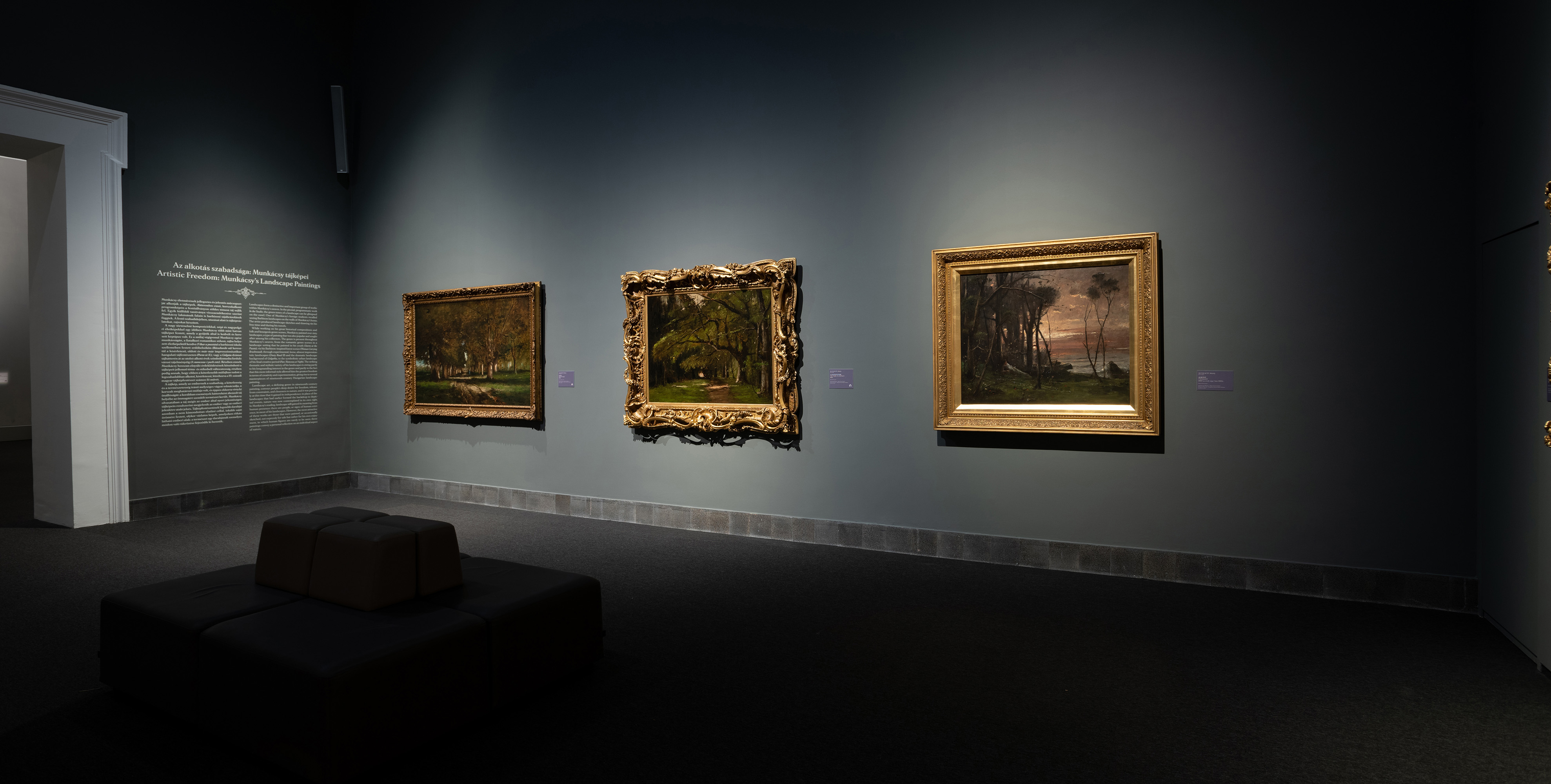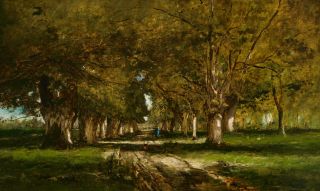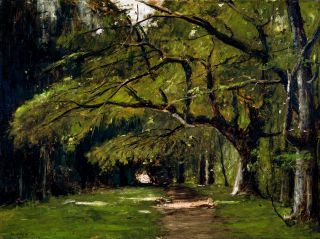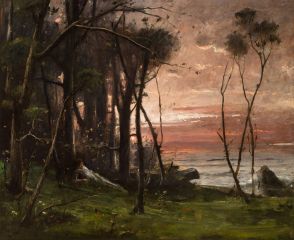Landscapes form a distinctive and important group of works within Munkácsy's oeuvre. In the pivotal, programmatic work In the Studio, the green tones of a landscape can be glimpsed on the easel. One of Munkácsy's foreign students recalled seeing Barbizon landscapes on the walls of Munkácsy's home. The artist produced landscape sketches and drawings in his free time and during his travels.
While working on his great historical compositions and folk and bourgeois genre scenes, Munkácsy painted over sixty landscapes, a type of painting that was also popular and sought-after among his collectors. The genre is present throughout Munkácsy's oeuvre, from the romantic genre scenes in a landscape setting that he painted in his youth (Storm at the Puszta), via his Barbizon-inspired forest scenes (Woman Carrying Brushwood), through experimental, loose, almost impressionistic landscapes (Dusty Road II) and the dramatic landscape background of Golgotha, to the symbolistic urban landscape of his final creative period (Parc Monceau at Night). The striking thematic and stylistic variety of his landscapes is owing partly to his longstanding interest in the genre and partly to the fact that this more informal style allowed him the greatest freedom in terms of creativity and experimentation, giving rise to several masterpieces of nineteenth-century Hungarian landscape painting.
Landscape art, a defining genre in nineteenth-century painting, conveys people's deep desire for freedom, release from constraints, and closeness to nature, and it was precisely at this time that it gained its independence: in place of the landscapes that had earlier formed the backdrop to depicted events, nature was now contemplated in its own right. In Munkácsy's reading, landscape still gained its meaning from human presence: there are people, or signs of human existence, in most of his landscapes. However, the most attractive of these works are those that were painted, or occasionally sketched, not expressly for sale but rather for his own enjoyment, in which human figures are rarely to be seen: these paintings convey a personal reflection on an individual aspect of nature.
 Munkácsy
Munkácsy



